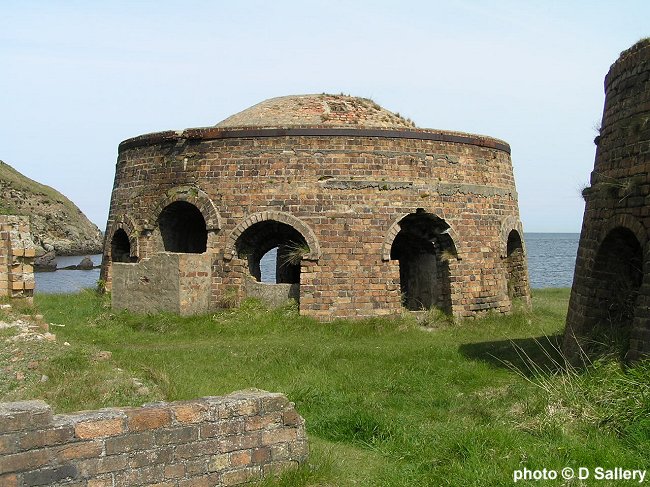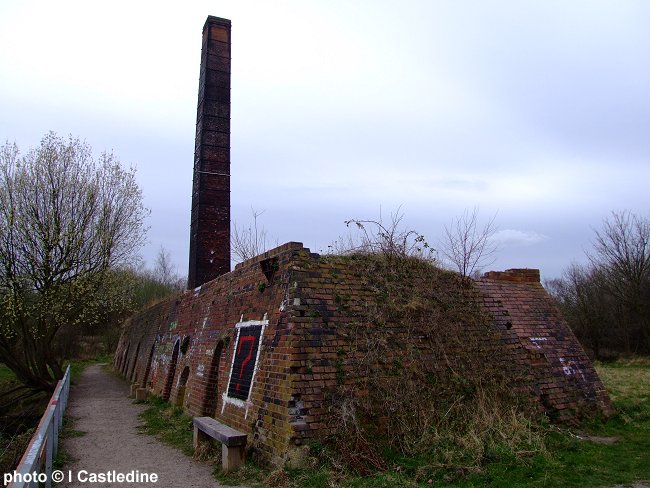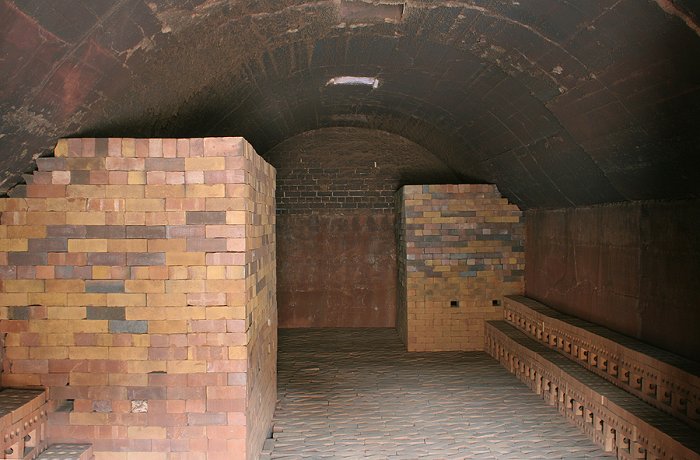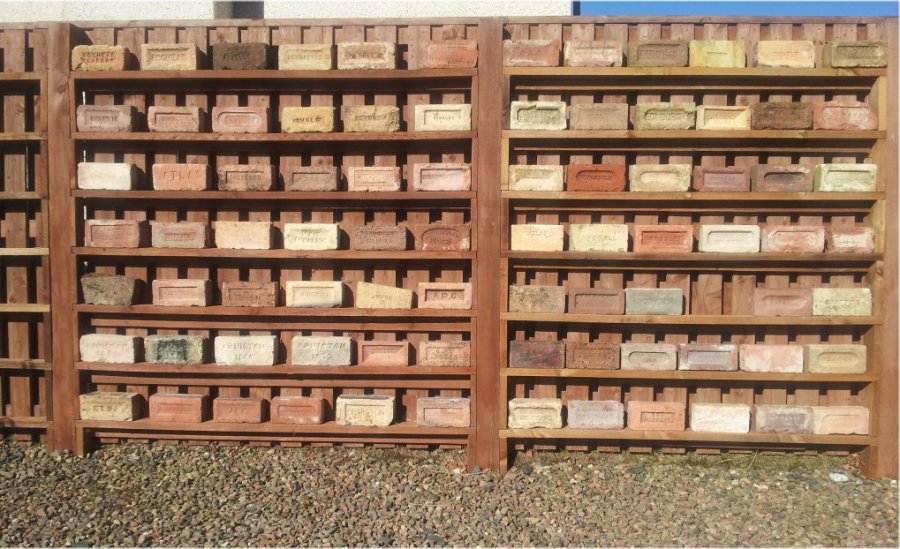

The back wall of this tram waiting shelter at Beamish Museum in County Durham is made almost entirely of named bricks from local brickmakers. There are several hundred bricks in this wall, quite a few images of which are now included in this website.


The Ruby brickworks in Rhydymwyn near Mold, North Wales, was typical of its kind. A small local industry supplying bricks to the local area. The photo below shows the remains of one of its beehive kilns in 2004:


A disused brick and tile works near Ironbridge

The chimney and end of the Hoffman Kiln at Cemaes Bay brickworks

The preserved brickworks at Prestongrange near Edinburgh



This is the still roofed Hoffman Kiln in Ilkeston Derbyshire, heavily wooded and hidden but a nice survivor with intact roof. This was Oakwell Brickworks and the site is listed. It can be found at SK460412, the quarry pit is next to it and there are also ruined buildings in the woods.



Some views of the long disused works at Porth Wen, Anglesey, North Wales.


This brick works is Park Hill at Wombwell near Barnsley. It was operated by Oakland Bros from late 19thC into the 1960's. It is a Staffordshire type kiln. The adjacent claypit is now a fishing pond and the site inc chimney is scheduled for conservation. Update: Due to the poor condition of the chimney it was demolished in May 2011.

These vehicles were a common site delivering bricks around North Wales until the late 1950's. This preserved example paid a return visit to Buckley in August 2009, a youtube video of it may be viewed here

These are part of what's left of Garrabost brickworks on the Isle of Lewis. The works had a long history having been started in the 1850's. A Garrabost brick can be seen here


The remains of the four famous chimneys following their demolition in 2009, photo by Alan Murray-Rust.

The logo found on the overalls of Butterley employees, photo by Simon Patterson.

Alan Murray-Rust paid a visit to the William Blyth tileworks at Barton on Humber recently. This is a view inside their kiln. The Normanton Brick Co. bricks are seconds which are used to form the bagwalls in the kilns, apparently they are very hard and much cheaper than firebricks.


This artistic piece was photographed at a school in Llanfair Caereinion in Powys.
A postcard showing local bricks issued by Summerlee Museum near Glasgow


A view of the inside of a disused Hoffman Kiln

The brick path illustrated is at Catcliffe, South Yorkshire near to its famous preserved glass furnace cone. The bricks are the products of the Rother Vale brick works, marked [RV] and G. Robinson, Masborough. Thanks to Derek Barker for the contribution.

Oliver Richardson visited the Williamson Cliff works in Stamford in the 1970's. This photo shows their range of hand thrown bricks: clay mixed with 'grog' to create a very heavy fire brick. They were marketed under the name 'Stamfordstone'.


Part of Mark Cranston's collection in the Scottish Borders. Now that's the way to exhibit your bricks!

John Biggs writes: These bricks were found at the Island Inn Hotel in Barbados, the courtyard is paved with them. The Hotel was constructed In 1804 as a Rum storage for the British Regiment. They are mainly Scottish firebricks and were used as ballast in ships.


















